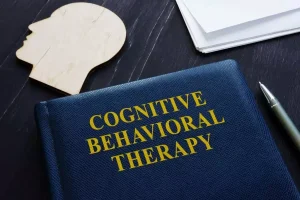For people with opioid addiction, Medicaid overhaul comes with risks : Shots Health News : NPR

Unlike tolerance, where the issue is diminished effects, dependence involves both a physical and psychological compulsion to continue using the substance to avoid withdrawal symptoms and maintain normal functioning. It is important to note that dependence extends beyond mere physical reliance and often requires increasing dosages due to tolerance, further complicating the condition. Drug abuse refers to a pattern of behaviors where an individual uses drugs in a way that leads to negative consequences, but it may not necessarily indicate a full-blown addiction. On the other hand, drug addiction represents a more severe and chronic condition. It is characterized by compulsive and uncontrollable use of drugs, often to the detriment of your health, relationships, and overall well-being.

What is the difference between drug tolerance and drug intolerance?

Decreases in reward can be driven by overactivation of the habenula or overactivation of the dynorphin system in the ventral striatum, both of which can decrease dopamine neuron firing. Increases in stress-like states and increased responsivity to stressors could be driven by the recruitment of CRF in the amygdala and other extrahypothalamic stress systems. Ongoing recovery from active drug addiction involves several cycle of addiction vital aspects, such as sobriety maintenance, coping strategies, physical and mental health well-being, lifestyle changes, continued learning, relapse prevention, support systems, etc. With increased frequency and quantity of use, the risks to personal health and well-being escalate, often transitioning into drug abuse. As abuse becomes more severe, individuals are likely to develop physical and mental dependence.
- Drug experimentation can be a one-time occurrence or involve sporadic use without necessarily developing an addiction.
- Whether it’s an overdose, an accident while under the influence, or another health crisis, frequent ER trips highlight the urgency to address the drug abuse issue.
- For example, when it comes to illicit drugs used to feel a ‘high,’ even one use is considered abuse.
- Dependence, in the context of substance use disorder, occurs when an individual becomes reliant on a substance to function normally, stemming from the neurochemical changes in the brain due to regular drug use.
- Female rats, in general, learn to self-administer drugs and alcohol more rapidly, escalate their drug taking more quickly, show greater symptoms of withdrawal, and are more likely to resume drug seeking in response to drugs, drug-related cues, or stressors.
Key messages
This variability underscores the complexity of addressing cravings in treatment settings, as each individual may describe and experience cravings differently. Understanding these 4 C’s helps in recognizing the severity of addiction and is essential for developing effective treatment strategies. Professional help and rehabilitation programs often address these components to assist individuals in breaking the cycle of addiction. It is essential for individuals and their support networks to recognize early signs of relapse and intervene promptly. The goal is to prevent the relapse from evolving into active addiction by utilizing recovery tools and resources effectively.
How Does Addiction Develop in the Brain?
Professional treatment is imperative in all cases to impact behavioral processes and to achieve a successful recovery. The way that people progress through the different stages is very different and is dependent on each individual. While some may go through all the steps to recovery in a relatively short period, some people may find themselves stuck on a single stage, such as the contemplation stage, for years. Regardless of whether considering opioids or alcoholic recovery stages, they are identical. In the precontemplation stage, the individual who is dependent on a substance is completely unwilling to seek any form of medical support.
Drug Addiction Counselors: Guiding the Path to Recovery and Healing

It is noteworthy that relapse rates can vary depending on the specific substance. For example, substances with severe withdrawal symptoms, like opioids or alcohol, may have higher relapse rates. Understanding drug and alcohol experimentation motivations is crucial for addressing the root causes of drug use and effectively supporting individuals at risk of developing substance abuse disorders. Recognizing that experimentation does not always lead to addiction can help in creating targeted interventions that respect individual experiences while promoting healthier choices. If you or someone you know is living with addiction, you may feel overwhelmed and out of control. With professional medical treatment and commitment, millions of people have overcome substance use disorders and behavioral addictions to live happy, healthy lives.
- If work, school, or home duties are consistently ignored or poorly performed due to drug use, this is a symptom of abuse.
- Additional research is needed to better understand how such products – as well as emerging addictive substances – affect brain function and behavior, and contribute to addiction.
- The ANA highlights the importance of multidimensional information capture, including genetic and neuroimaging data, to advance our understanding of addiction and inform more effective diagnostic and treatment strategies.

There are many types of addiction (alcohol, drugs, sex, gambling, overeating, overspending, etc.) and each type follows a consistent cycle of phases that become increasingly difficult to overcome. Depending on the person and their particular addiction, https://ecosoberhouse.com/ each phase may take a short or long time to develop. However, even though each phase may differ in its duration, they generally progress in a repetitive pattern until some form of treatment takes place to intervene and alleviate the addiction.
- To help clinicians prevent alcohol-related harm in adolescents, NIAAA developed a clinician’s guide that provides a quick and effective screening tool (see Resources below).
- Eventually, in the absence of the substance, a person may experience negative emotions such as stress, anxiety, or depression, or feel physically ill.
- With a decade of experience in producing content for drug rehabilitation centers, Ben has developed a deep understanding of the challenges and triumphs in this sphere.
- Depending on the addictive disorder, clinicians can consider the possibility of psychotherapy and pharmacotherapy.
- For those who feel they are not ready for direct treatment through rehab, they can consider counseling or a program for addicts like them, and their families can attempt to organize an intervention for them.
Study Finds Higher Risk of Ecstasy Use Disorder Among Younger International Users
- During this stage, the brain’s reward system goes into overdrive, flooding the body with feel-good chemicals like dopamine.
- A result of increased substance use to avoid withdrawal symptoms is a shift from impulsive to compulsive behavior.
- After a period of abstinence or reduced use, intense cravings, stress, or exposure to triggers (like certain environments or emotions) can lead to a relapse.
- Some neurotransmitters are inhibitory—they make it less likely that the receiving neuron will carry out some action.
- Among the most effective therapeutic strategies is Cognitive Behavioral Therapy (CBT), widely used due to its strong empirical support.

